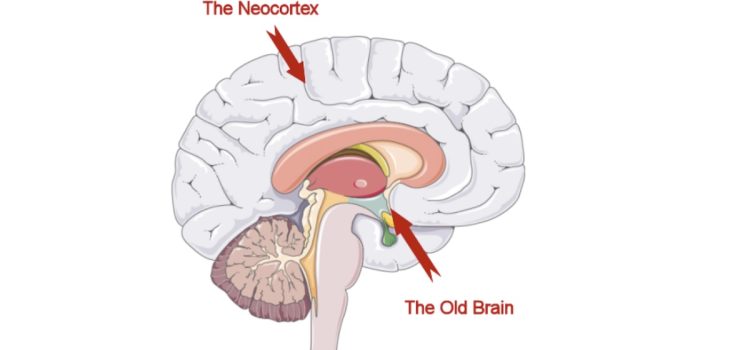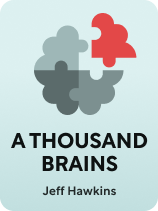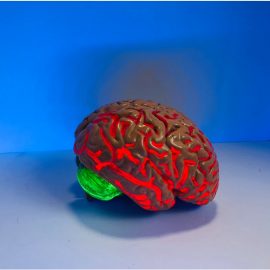

This article is an excerpt from the Shortform book guide to "A Thousand Brains" by Jeff Hawkins. Shortform has the world's best summaries and analyses of books you should be reading.
Like this article? Sign up for a free trial here.
Do you know how your brain processes information? What role do the primitive parts of your brain play in your everyday life?
In A Thousand Brains, neuroscientist Jeff Hawkins explores the relationship between the Old Brain and the neocortex. He explains how these two parts work together to shape our understanding of the world and enable intelligent behavior.
Continue reading to discover how your ancient brain structures influence your modern thoughts and actions.
The Old Brain
Though the thousands of mini-brains that comprise your neocortex get all the credit for intelligent behavior, they’re far from the only important part of your brain. Instead, the neocortex is entirely dependent on the older, more primitive parts of your brain to interact with the outside environment at all. Here, we’ll expand on how the different parts of your brain interact, what functions the primitive parts of your brain perform, and how the two work together to build your understanding of the world.
Hawkins explains that the human brain is divided into two main parts—the Old Brain and the neocortex. From an evolutionary perspective, the Old Brain is ancient and is similar to that in many animal species. It’s responsible for maintaining your basic biological functions and reflexes. In contrast, the neocortex is a more recent evolutionary development. It’s much larger in humans than in other species, accounting for 70% of your brain and acting as the source of your intelligence. The neocortex processes sensory information and, in humans, is capable of complex cognitive functions such as language and mathematics.
(Shortform note: Hawkins uses the term neocortex to refer to the entirety of what’s also known as the “cerebral cortex,” the brain’s large outer layer. However, that usage is only mostly correct. In humans, the neocortex makes up 90% of the cerebral cortex, though this ratio is lower in other animal species. The remaining portion of the cerebral cortex is the limbic lobe, a region between the neocortex and the Old Brain that governs emotional reactions, memory creation, and interpreting social cues in interactions. Meanwhile, the neocortex has its own divisions, including the frontal and parietal lobes involved in goal-setting and decision-making, the occipital lobe that handles visual processing, and the temporal lobe that lets us process language.)
The Old Brain’s Influence
Although your neocortex is where your higher thought processes reside, Hawkins writes that it doesn’t operate in isolation from your Old Brain. All sensory signals and motor commands must pass through the Old Brain before reaching the neocortex or being enacted by the body. Though the neocortex is divided into different regions that process specific types of information, such as vision, hearing, and language, these regions are highly interconnected. Every part of the neocortex is also connected to both the sensory inputs and the motor control areas of the Old Brain, indicating the close relationship between your senses, your thoughts, and your actions.
(Shortform note: By referring to the brain’s core as the Old Brain, Hawkins borrows language from the long-held and highly popularized Triune Brain Theory, which held that the parts of the brain near its base are “older” in the evolutionary sense. Today, this model has been largely abandoned. In Seven and a Half Lessons About the Brain, Barrett explains that the “old and new brain” theory relied on what brains look like to deduce what their regions can do. Instead, many parts of the brain collaborate to perform all its functions, even those previously subscribed to the so-called “Old Brain.” Hawkins’s theory accounts for this interdependence, even though he uses terms originating from the older model.)
Hawkins is clear that the brain doesn’t process information in a linear, input-output fashion like a computer. Instead, the neocortex constantly makes predictions based on past experience and the Old Brain’s current sensory input. When predictions and inputs match, your neocortex strengthens its existing neural connections—such as when you judge how hard to toss a ball and it lands exactly on your target. When your neurons’ predictions are wrong, like when you miss when throwing a ball, your brain will form new neural connections to update its mental models of the world. This process of prediction and error correction is a fundamental aspect of how brains learn, and since all the neocortex’s information comes from the Old Brain, they have to work together to enable intelligent thought and decision-making.
(Shortform note: By showing that we learn new skills and information by engaging different regions of the brain at once, Hawkins backs up the arguments of educators who tout the value of teaching techniques that exercise multiple sensory pathways. In Learning How to Learn, Barbara Oakley and Terrence Sejnowski explain that if you see and hear new information, your brain will create more neural connections. Likewise, in Limitless Mind, Jo Boaler writes that when multiple parts of your brain interact—such as those that manage memory, language, and vision—you amplify your ability to incorporate new information. Since the Old Brain is the nexus for all these processes, then our most primitive mental functions are crucial for higher learning.)

———End of Preview———
Like what you just read? Read the rest of the world's best book summary and analysis of Jeff Hawkins's "A Thousand Brains" at Shortform.
Here's what you'll find in our full A Thousand Brains summary:
- Why we need updated models for brain research
- How a new theory about human intelligence could be used to advance AI research
- Why human intelligence poses a more immediate threat to the world than AI does






